Penghancur plastik memainkan peran penting dalam daur ulang industri, pengelolaan limbah, dan pemrosesan material. Mesin ini memecah limbah plastik menjadi potongan-potongan yang lebih kecil dan mudah dikelola, sehingga memungkinkan daur ulang dan penggunaan kembali yang efisien. Namun, kinerja penghancur plastik sangat bergantung pada kondisi bilahnya.
Pisau yang tumpul atau rusak mengurangi efisiensi pemotongan, meningkatkan konsumsi energi, dan bahkan dapat menyebabkan kegagalan mesin. Pisau yang tidak dirawat dengan baik dapat menyebabkan pemotongan yang tidak konsisten, panas berlebih, dan keausan yang tidak perlu pada komponen mesin lainnya. Dalam kasus yang ekstrem, pisau yang aus dapat mengakibatkan waktu henti yang lama dan perbaikan yang mahal.
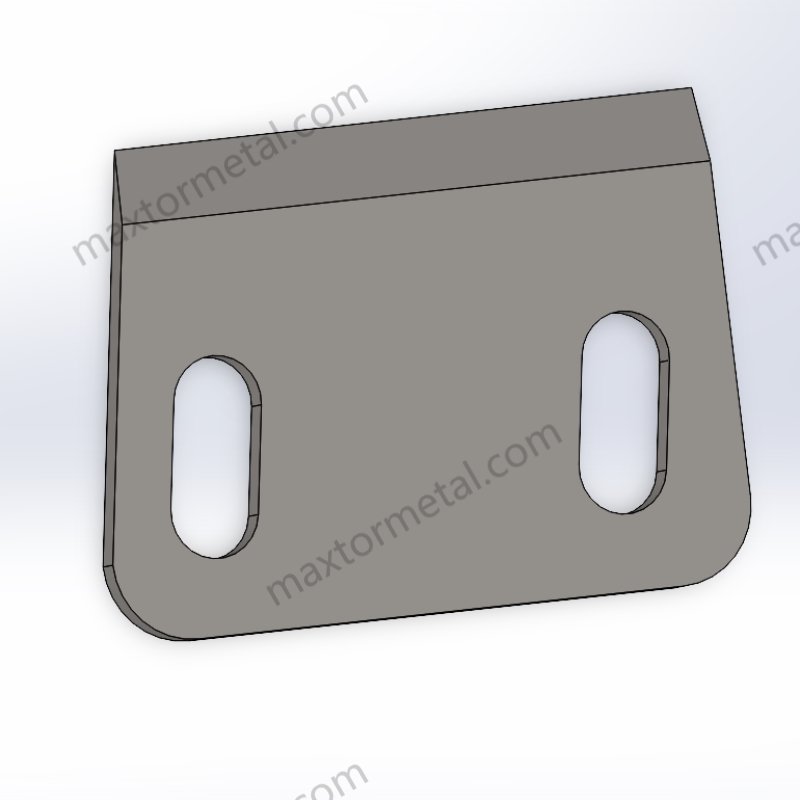
Memahami kapan dan bagaimana mengganti Pisau Penghancur Plastik sangat penting untuk menjaga produktivitas dan meminimalkan biaya operasional. Panduan ini akan memandu Anda memahami jenis-jenis bilah, tanda-tanda keausan, dan proses penggantian langkah demi langkah.
Tentang Nanjing Metal
Sebagai produsen pisau dan bilah industri terkemuka di industri ini, Nanjing Metal telah memproduksi solusi penghancur berkualitas tinggi selama 18 tahun. Tim kami mengkhususkan diri dalam merancang dan memproduksi Pisau Kustom untuk memenuhi kebutuhan unik berbagai industri.
1. Jenis-jenis Pisau Penghancur Plastik
Memilih jenis bilah yang tepat sangat penting untuk memastikan penghancuran yang efisien, memperpanjang masa pakai mesin, dan mengurangi biaya operasional. Di bawah ini, kami akan membahas tiga kategori utama bilah penghancur plastik secara lebih rinci, termasuk komposisi material, sifat, dan aplikasi idealnya.
1.1 Bilah Baja Kecepatan Tinggi (HSS)
Komposisi Bahan: Bilah HSS terbuat dari baja karbon tinggi dengan unsur paduan seperti tungsten, molibdenum, vanadium, dan kromium untuk meningkatkan kekerasan dan ketahanan panas.
Properti & Keunggulan:
✅ Ketangguhan yang sangat baik, membuatnya tahan terhadap keretakan dan benturan.
✅ Ketahanan aus yang tinggi, sehingga tetap tajam dalam jangka waktu lebih lama.
✅ Cocok untuk aplikasi penghancuran berkecepatan tinggi karena sifatnya yang tahan panas.
Paling Baik Digunakan Untuk:
- Plastik keras dan kaku, seperti ABS (Akrilonitril Butadiena Stirena) dan polikarbonat (PC).
- Operasi penghancuran bervolume tinggi yang memerlukan ketajaman yang tahan lama.
1.2 Pisau Baja Paduan
Komposisi Bahan: Pisau paduan diproduksi menggunakan baja karbon tinggi yang dicampur dengan unsur-unsur tambahan seperti nikel, mangan, dan kromium untuk meningkatkan daya tahan.
Properti & Keunggulan:
✅ Keseimbangan antara ketangguhan dan kekerasan, membuatnya serbaguna.
✅ Ketahanan aus yang baik, meskipun sedikit lebih rendah dari bilah karbida.
✅ Lebih hemat biaya daripada karbida sambil menawarkan daya tahan yang lebih unggul dibandingkan bilah baja standar.
Paling Baik Digunakan Untuk:
- Penghancuran tugas sedang PVC (Polivinil Klorida) dan HDPE (Polietilen Densitas Tinggi).
- Aplikasi serba guna yang memerlukan kinerja yang terjangkau namun dapat diandalkan.
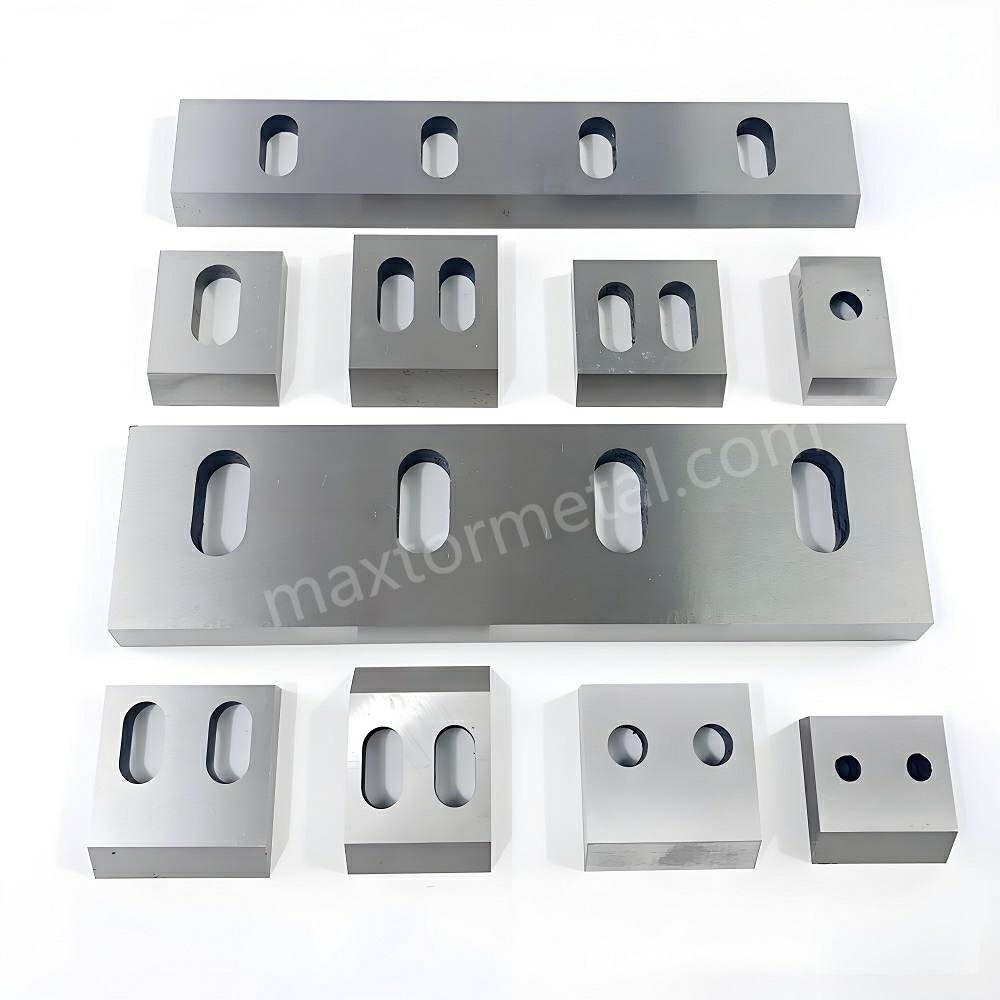
1.3 Pisau Karbida
Komposisi Bahan: Mata pisau ini memiliki ujung pemotong karbida tungsten yang terikat pada inti baja, menawarkan kekerasan ekstrem dan ketahanan tinggi terhadap abrasi.
Properti & Keunggulan:
✅ Ketahanan aus yang sangat tinggi, memperpanjang umur bilah secara signifikan.
✅ Kekerasan luar biasa, mengurangi kebutuhan untuk sering mengasah.
✅ Biaya awal lebih tinggi tetapi biaya penggantian jangka panjang lebih rendah.
Paling Baik Digunakan Untuk:
- Plastik rekayasa dan bahan abrasif seperti polimer yang diperkuat serat (FRP).
- Aplikasi industri tugas berat yang memerlukan pemotongan presisi dan waktu henti minimal.
1.4 Cara Memilih Pisau yang Tepat
Memilih pisau yang tepat tergantung pada beberapa faktor:
| Faktor | Jenis Pisau Terbaik | Contoh Aplikasi |
| Kekerasan Material | HSS atau Karbida | Plastik kuat (PC, PET, ABS) |
| Diperlukan Ketahanan Aus | Karbit | Plastik abrasi tinggi (FRP) |
| Pertimbangan Anggaran | Baja Paduan | Penghancur plastik tugas sedang |
| Kecepatan memotong | HSS | Jalur penghancuran berkecepatan tinggi |
2. Cara Kerja Pisau Penghancur
Memahami mekanisme bilah penghancur sangat penting untuk mengoptimalkan kinerja mesin dan menghindari keausan dini.
2.1 Mekanisme Pemotongan Pisau Penghancur Plastik
Penghancur plastik beroperasi menggunakan berputar dan pisau tetap yang bekerja sama untuk memecah bahan plastik menjadi potongan-potongan yang lebih kecil. Tindakan pemotongan terjadi melalui:
- Pencukuran – Gaya utama yang diterapkan, di mana pisau yang berputar mendorong plastik ke pisau yang diam untuk menghasilkan potongan yang bersih.
- Merobek – Untuk plastik yang lebih lunak, bilah menciptakan retakan kecil yang mengembang karena tekanan mekanis, sehingga plastik terpecah-pecah.
- Kompresi – Beberapa mesin penghancur menggunakan gaya kompresi sebelum memotong untuk meningkatkan efisiensi.
2.2 Faktor Utama yang Mempengaruhi Efisiensi Penghancuran
Kinerja penghancur secara langsung dipengaruhi oleh faktor-faktor terkait bilah berikut:
| Faktor | Dampak pada Kinerja |
| Ketajaman Pisau | Pisau yang tumpul meningkatkan konsumsi energi dan menyebabkan potongan yang tidak rata. |
| Penyelarasan Bilah | Pisau yang tidak sejajar menyebabkan getaran, keausan berlebihan, dan efisiensi yang rendah. |
| Sudut Pemotongan & Jarak Bebas | Jarak bebas yang tidak disetel dengan baik dapat menimbulkan gesekan berlebihan dan panas berlebih. |
| Bahan Pisau | Bahan bilah yang tepat mencegah keausan dan kerusakan yang sering terjadi. |
2.3 Mengapa Penyelarasan Bilah Itu Penting
Penjajaran bilah yang benar memastikan distribusi keausan yang merata, sehingga mengurangi biaya perawatan dan tekanan pada mesin.
- Jika jarak bilah terlalu besar, plastik dapat lolos tanpa tercabik sempurna.
- Bila jarak bilah terlalu kencang, gesekan akan meningkat, mengakibatkan penumpukan panas berlebihan dan pemborosan energi.
Kiat Pro: Selalu ikuti spesifikasi pabrik untuk posisi dan penyelarasan bilah.
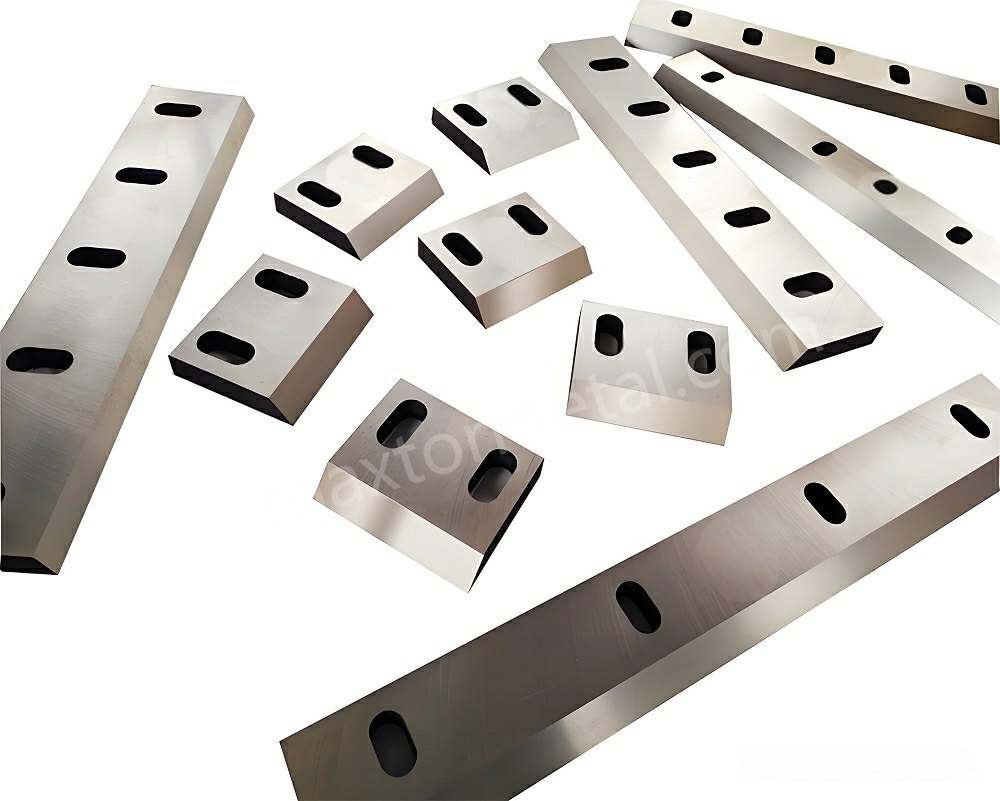
3. Tanda-tanda yang Menunjukkan Perlunya Penggantian Mata Pisau
Mengetahui kapan harus mengganti bilah penghancur plastik membantu menghindari waktu henti yang tidak terduga dan perbaikan mesin yang mahal.
3.1 Tanda-tanda Umum Keausan Bilah
| Indikator Keausan | Apa Artinya | Larutan |
| Efisiensi pemotongan berkurang | Pisau tumpul atau tidak sejajar. | Mengasah ulang atau mengganti bilah pisau. |
| Ukuran material yang diparut tidak konsisten | Keausan bilah yang tidak merata atau jarak bebas yang tidak tepat. | Periksa dan sesuaikan keselarasan bilah. |
| Getaran yang tidak biasa | Pisau yang longgar atau rusak. | Kencangkan baut atau ganti pisau yang rusak. |
| Penumpukan panas yang berlebihan | Gesekan dari bilah tumpul. | Bersihkan, lumasi, atau ganti bilahnya. |
3.2 Faktor-faktor yang Mempengaruhi Umur Bilah
Berbagai faktor mempengaruhi berapa lama bilah penghancur bertahan:
- Kekerasan Bahan Plastik – Plastik yang lebih keras (misalnya, PC, PET) menyebabkan keausan lebih cepat.
- Kondisi Pengoperasian Mesin – Penghancuran dengan kecepatan tinggi menghasilkan lebih banyak panas dan tekanan.
- Praktik Pemeliharaan – Pelumasan dan pemeriksaan penyelarasan secara teratur memperpanjang umur bilah.
Data Industri: Studi menunjukkan bahwa bilah penghancur yang dirawat secara berkala bertahan 30-50% lebih lama daripada bilah penghancur pada mesin yang diabaikan (Sumber: Manufacturing Today, 2023).
3.3 Praktik Terbaik untuk Inspeksi Blade
Jadwal pemeliharaan terstruktur membantu mendeteksi keausan bilah sebelum menyebabkan masalah besar:
| Tugas Inspeksi | Frekuensi |
| Pemeriksaan Pisau Visual | Sehari-hari |
| Pemeriksaan Kekencangan dan Keselarasan Baut | Mingguan |
| Analisis Keausan Bilah Penuh | Bulanan |
💡 Kiat Pro: Mencatat penggantian bilah pisau membantu melacak tren kinerja dan mengoptimalkan jadwal pemeliharaan.
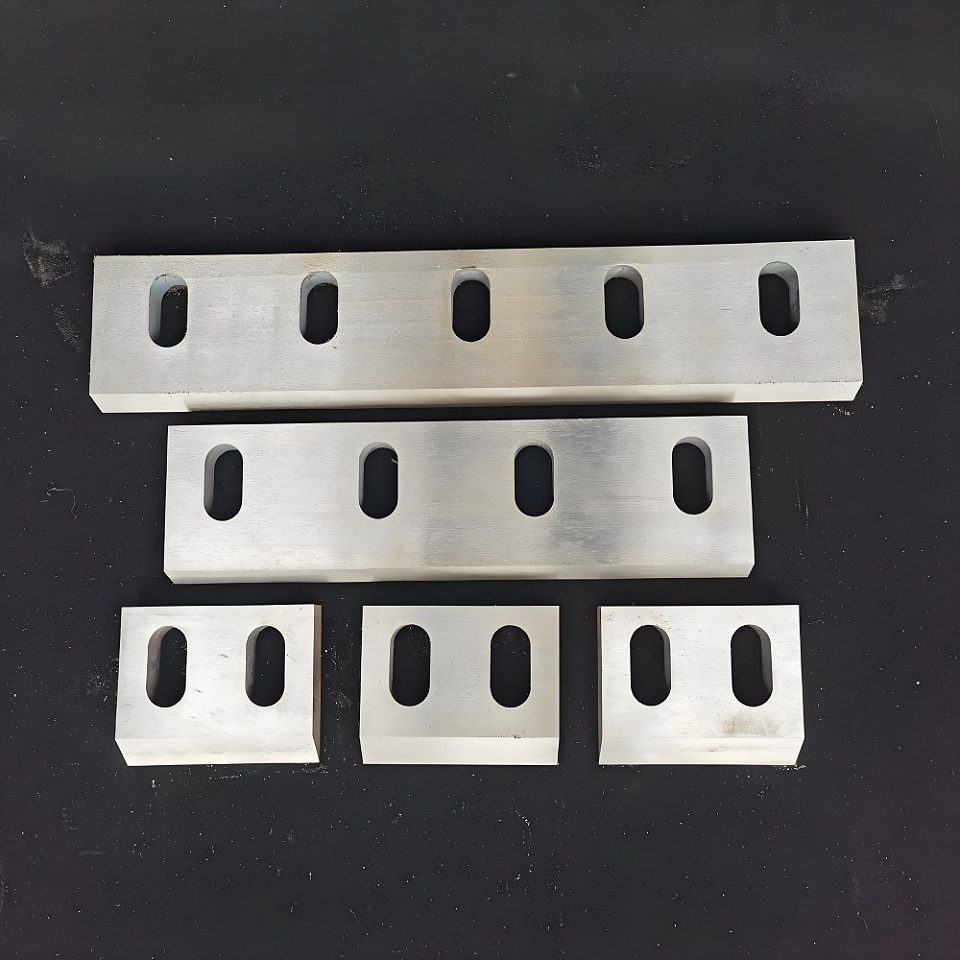
4. Panduan Penggantian Blade Langkah demi Langkah
4.1 Persiapan Penggantian Blade
Persiapan yang tepat mengurangi waktu henti dan mencegah kesalahan. Sebelum memulai, kumpulkan peralatan dan perlengkapan keselamatan yang diperlukan:
Peralatan & Perkakas yang Diperlukan
| Alat/Peralatan | Tujuan |
| Sarung tangan keselamatan | Lindungi tangan dari ujung yang tajam |
| Kacamata pengaman | Mencegah kotoran masuk ke mata |
| Kunci torsi | Pastikan pengencangan baut yang tepat |
| Kunci Allen dan kunci inggris | Lepaskan pengencang bilah |
| Sikat dan kain pembersih | Bersihkan permukaan pemasangan bilah |
| Penghilang karat dan pelumas | Hilangkan karat dan mudahkan pemasangan |
| Pisau pengganti | Pastikan ukuran dan jenis yang benar |
| Kit penguncian/penandaan | Mencegah startup mesin secara tidak sengaja |
Langkah-langkah Persiapan Utama
- Verifikasi spesifikasi bilah – Pastikan bilah baru sesuai dengan kebutuhan mesin (ukuran, keselarasan lubang, jenis material).
- Periksa stok suku cadang tambahan – Siapkan ring, shim, dan baut cadangan apabila diperlukan penggantian.
- Bersihkan ruang kerja – Simpan semua perkakas dan komponen di tempat yang terang.
- Gunakan APD (Alat Pelindung Diri) yang tepat – Sarung tangan, kacamata, dan pakaian pelindung sangat penting.
💡 Kiat Pro: Simpan daftar periksa pemeliharaan tercetak di dekat Anda untuk melacak setiap langkah.
4.2 Prosedur Penguncian dan Penutupan Keamanan
Kecelakaan yang berhubungan dengan mesin sering kali disebabkan oleh kegagalan mengikuti prosedur penghentian yang tepat. Sebelum mengganti bilah, lakukan langkah-langkah keselamatan penting berikut:
Prosedur Penguncian/Penandaan Langkah demi Langkah (LOTO)
- Matikan Mesin
- Tekan tombol berhenti darurat.
- Matikan saklar daya utama.
- Putuskan Sambungan Sumber Daya
- Untuk penghancur listrik: Cabut dari sumber listrik utama.
- Untuk sistem hidrolik: Matikan dan kurangi tekanan sistem.
- Terapkan Perangkat Penguncian/Penandaan
- Pasangkan alat pengunci pada sakelar daya utama.
- Tempelkan label penandaan untuk memperingatkan orang lain bahwa pemeliharaan sedang berlangsung.
- Verifikasi Penutupan
- Tekan tombol mulai untuk memastikan tidak ada daya yang mengalir.
- Tunggu hingga semua bagian yang bergerak berhenti sepenuhnya sebelum melanjutkan.
🚨 Peringatan: Jangan pernah berasumsi bahwa mesin dalam keadaan mati. Selalu periksa sebelum mengerjakannya.
4.3 Mengakses Kompartemen Blade
Tergantung pada model penghancur, bilah dapat ditempatkan dalam kompartemen di balik penutup pelindung.
Langkah-Langkah untuk Mengakses Kompartemen Pisau
- Identifikasi titik akses – Lihat manual mesin untuk menemukan ruang pisau.
- Lepaskan penutup pengaman atau panel akses – Gunakan kunci pas yang sesuai untuk melepaskan baut.
- Amankan komponen yang longgar – Cegah sekrup atau penutup jatuh ke dalam mesin.
- Periksa area bilah – Periksa serpihan, pola keausan, dan masalah penyelarasan sebelum melanjutkan.
💡 Kiat Pro: Ambil foto susunan bilah yang ada sebelum melepaskannya untuk membantu pemasangan kembali.
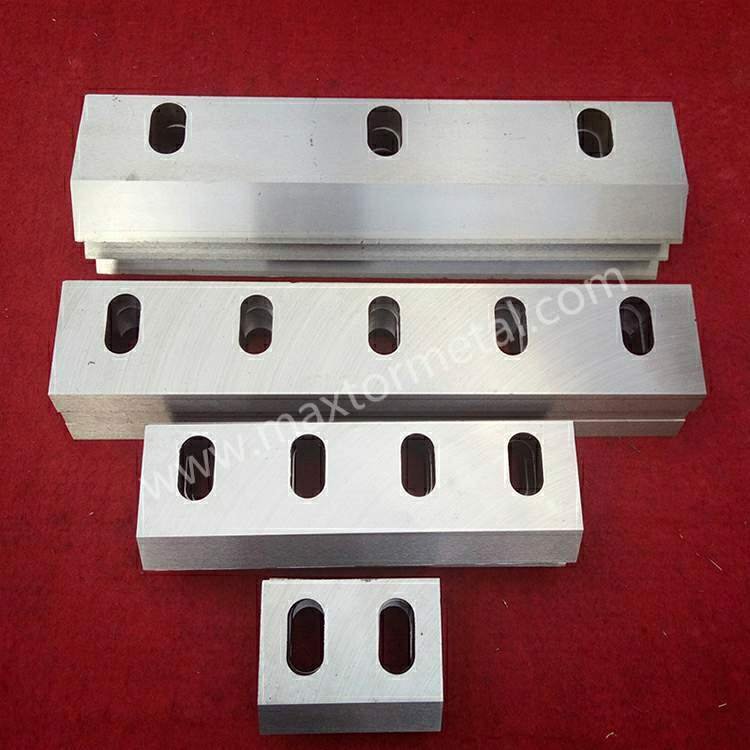
4.4 Melepas Bilah Lama
Pelepasan bilah yang salah dapat merusak permukaan pemasangan, yang menyebabkan masalah ketidaksejajaran. Ikuti langkah-langkah tepat berikut:
Prosedur Pelepasan Pisau
- Kendurkan baut dengan pola silang untuk mencegah tekanan pada bilah.
- Lepaskan ring dan ganjal dengan hati-hati, simpan dalam keadaan teratur untuk penggunaan selanjutnya.
- Geser bilah lama secara perlahan, hindari gerakan tiba-tiba yang dapat menyebabkan cedera.
- Periksa bilah yang dilepas untuk mengetahui pola keausan, dokumentasikan kerusakan yang berlebihan.
- Bersihkan area pemasangan sebelum memasang bilah baru.
Kesalahan Umum yang Harus Dihindari
❌ Menggunakan tenaga berlebihan – Jika baut tersangkut, gunakan pelumas alih-alih memaksanya.
❌ Ring atau shim yang terjatuh – Kehilangan komponen dapat menyebabkan penyelarasan bilah yang tidak tepat.
❌ Melewatkan dokumentasi – Selalu catat pengamatan untuk melacak tren keausan bilah.
4.5 Membersihkan dan Mempersiapkan Permukaan Pemasangan
Permukaan pemasangan yang bersih sangat penting untuk stabilitas bilah dan akurasi pemotongan. Bahkan partikel kecil dapat menyebabkan ketidaksejajaran, sehingga meningkatkan keausan bilah.
Langkah-Langkah Pembersihan
✅ Gunakan sikat kawat untuk menghilangkan karat dan kotoran.
✅ Bersihkan area tersebut dengan pelarut industri untuk menghilangkan minyak.
✅ Periksa adanya retakan atau permukaan tidak rata yang dapat memengaruhi kinerja bilah.
✅ Pastikan semua ring dan shim dalam kondisi baik; ganti jika perlu.
💡 Kiat Pro: Gunakan alat penggaris untuk memeriksa ketidakrataan permukaan sebelum memasang bilah pisau baru.
4.6 Memasang Bilah Baru
Memasang bilah pisau dengan benar akan memastikan penghancuran yang efisien dan memperpanjang umur mesin.
Proses Instalasi
- Sejajarkan lubang bilah dengan permukaan pemasangan.
- Masukkan ring dan shim sesuai dengan rekomendasi pabrik.
- Kencangkan baut dengan tangan pada tempatnya sebelum pengencangan terakhir.
- Pastikan jarak antar bilah sama untuk menghindari potongan yang tidak rata.
⚠️ Penting: Pisau harus diposisikan pada arah putaran yang benar untuk menghindari inefisiensi dan kerusakan mesin.
4.7 Pengencangan Baut yang Benar
Pengencangan yang tidak tepat dapat menyebabkan bilah melengkung atau bergetar berlebihan, sehingga mengakibatkan keausan dini.
Praktik Terbaik untuk Mengencangkan Baut Bilah
✅ Gunakan kunci torsi – Ikuti spesifikasi torsi pabrikan.
✅ Kencangkan baut dengan pola silang – Ini memastikan distribusi gaya yang merata.
✅ Hindari mengencangkan terlalu kencang – Hal ini dapat merusak tepi bilah atau menyebabkan keretakan.
✅ Periksa kembali torsi setelah uji coba awal – Beberapa baut mungkin sedikit kendor.
💡 Kiat Pro: Simpanlah bagan spesifikasi torsi sebagai referensi.
4.8 Uji Coba dan Penyesuaian Akhir
Uji coba memverifikasi pemasangan dan memastikan penghancur beroperasi dengan lancar.
Prosedur Uji Coba
- Pasang kembali semua penutup dan panel pengaman.
- Sambungkan kembali catu daya dan hidupkan mesin.
- Jalankan penghancur pada kecepatan rendah selama 5–10 menit.
- Pantau masalah berikut ini:
- Getaran yang tidak biasa
- Tingkat kebisingan tidak merata
- Kinerja pemotongan tidak teratur
- Bila perlu, lakukan penyesuaian penyelarasan bilah.
💡 Kiat Pro: Mintalah operator memantau kinerja saat uji coba berlangsung.
4.9 Pencatatan Pemeliharaan
Mendokumentasikan setiap penggantian bilah akan meningkatkan efisiensi perawatan dan membantu memprediksi penggantian di masa mendatang.
Apa yang Harus Dicantumkan dalam Catatan Pemeliharaan
📌 Tanggal penggantian – Umur bilah lintasan.
📌 Jenis bilah yang dipasang – Pastikan konsistensi.
Pola keausan yang diamati – Identifikasi potensi masalah mesin.
📌 Nilai torsi yang digunakan – Verifikasi pemasangan yang benar.
📌 Pemeliharaan terjadwal berikutnya – Mencegah kegagalan yang tidak terduga.
💡 Kiat Pro: Menggunakan log pemeliharaan digital untuk melacak frekuensi penggantian dan menjadwalkan pemeliharaan preventif.
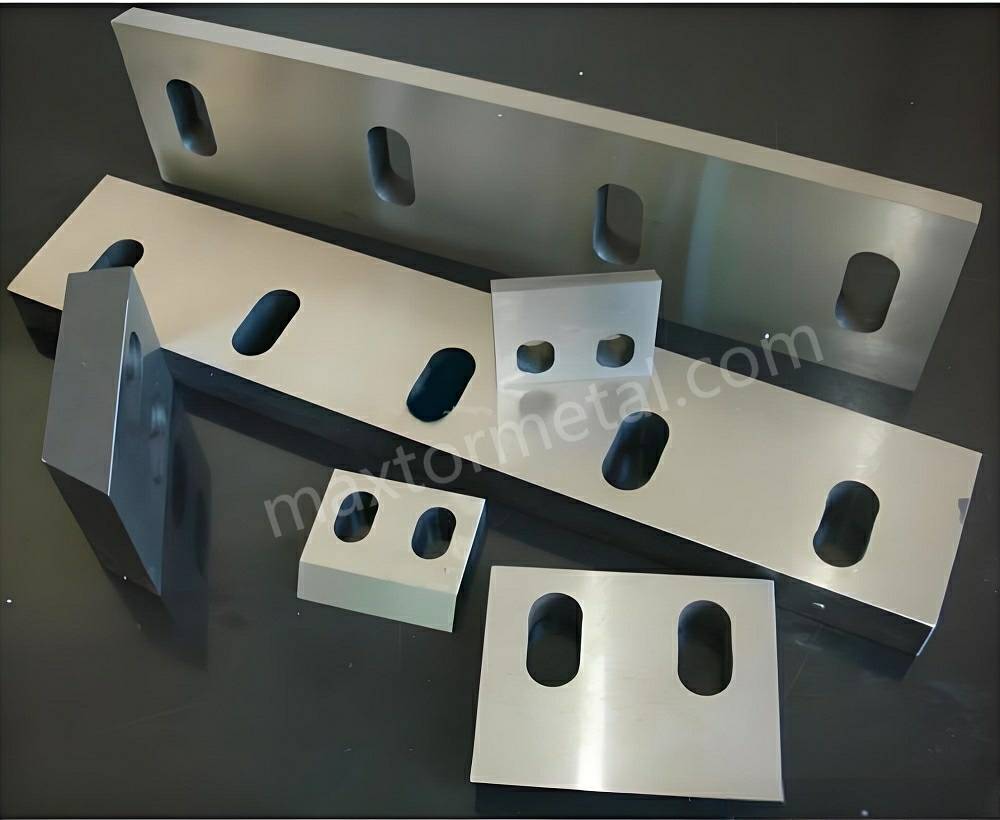
5. Rencana Inspeksi & Pemeliharaan Rutin
Rencana perawatan Plastic Crusher yang terstruktur dan proaktif mencegah waktu henti yang tidak direncanakan, mengurangi biaya operasional, dan memaksimalkan masa pakai bilah penghancur plastik. Menerapkan strategi perawatan preventif memastikan kinerja penghancuran yang konsisten dan meminimalkan risiko keselamatan.
Studi menunjukkan bahwa pemeliharaan terencana mengurangi waktu henti mesin hingga 45% dibandingkan dengan pemeliharaan reaktif (Sumber: Manufacturing Today, 2023).
5. 1Jadwal Perawatan yang Direkomendasikan
Tabel berikut menyediakan rencana pemeliharaan optimal berdasarkan praktik terbaik industri.
| Tugas Pemeliharaan | Frekuensi | Prosedur |
| Inspeksi Visual Pisau | Sehari-hari | Carilah keausan, retakan, atau masalah penyelarasan yang terlihat. |
| Periksa Baut dan Kesejajaran Bilah | Mingguan | Pastikan baut kencang dan bilah sejajar dengan benar. |
| Lumasi Area Pemasangan Bilah | Mingguan | Gunakan pelumas industri untuk mencegah korosi. |
| Kompartemen Pisau Bersih | Dua kali seminggu | Singkirkan sisa plastik, debu, dan kotoran dari mesin. |
| Memantau Konsumsi Energi | Bulanan | Lonjakan energi yang tiba-tiba menunjukkan tumpulnya atau ketidakselarasan bilah. |
| Penajaman atau Penggantian Pisau | Sesuai kebutuhan | Pertajam atau ganti bilah pisau saat efisiensi pemotongan menurun. |
| Inspeksi Mesin Lengkap | Setiap 3 bulan | Periksa semua komponen, sabuk, bantalan, dan roda gigi untuk keausan. |
5.2 Daftar Periksa Pemeriksaan Pisau
Gunakan daftar periksa ini selama pemeliharaan mingguan untuk memastikan bilah penghancur dalam kondisi optimal:
✅ Tepi bilah tampak tajam dan bebas dari serpihan
✅ Tidak ada tanda-tanda korosi atau karat
✅ Baut bilah dikencangkan sesuai torsi yang direkomendasikan pabrik pembuatnya
✅ Tidak ada getaran atau suara abnormal saat crusher beroperasi
✅ Jarak bebas bilah diatur sesuai spesifikasi mesin
5.3 Kesalahan Perawatan Umum yang Harus Dihindari
❌ Melewatkan pemeriksaan rutin – Menyebabkan kerusakan yang tidak terduga.
❌ Mengabaikan getaran kecil – Ketidaksejajaran dini dapat bertambah parah seiring berjalannya waktu.
❌ Menunda penggantian bilah – Bilah yang aus meningkatkan penggunaan energi dan menurunkan kualitas pemotongan.
❌ Tidak menggunakan pelumasan yang tepat – Dapat menyebabkan penumpukan karat, yang mengakibatkan ketidakselarasan.
💡 Kiat Pro: Latih operator kereta api untuk mengenali tanda-tanda peringatan dini keausan bilah kereta api guna mencegah kerusakan mahal.
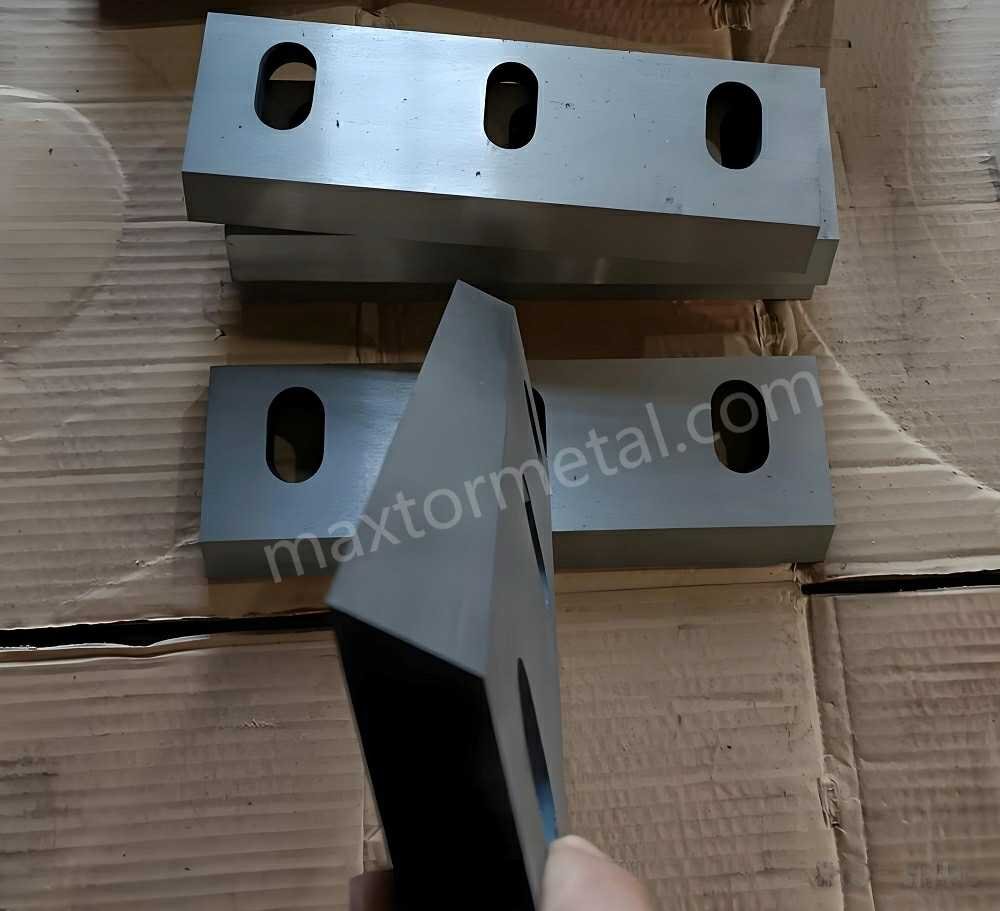
6. FAQ tentang Penggantian Bilah Penghancur Plastik
Berikut adalah pertanyaan umum terkait penggantian dan perawatan bilah penghancur, beserta jawaban terperinci.
6.1 Seberapa Sering Pisau Harus Diganti?
Menjawab: Frekuensi penggantian bergantung pada beberapa faktor, termasuk:
🔹 Jenis material yang dicacah – Plastik keras membuat bilah pisau lebih cepat aus dibandingkan plastik lunak.
🔹 Frekuensi penghancuran – Operasi volume tinggi yang berkelanjutan memerlukan penggantian yang lebih sering.
🔹 Bahan bilah – Bilah HSS bertahan 3-6 bulan, sedangkan bilah karbida dapat bertahan 6-12 bulan dengan perawatan yang tepat.
💡 Praktik Terbaik: Lacak interval penggantian dan sesuaikan jadwal berdasarkan pola keausan aktual.
6.2 Bagaimana Saya Dapat Memperpanjang Umur Pisau?
Menjawab: Terapkan strategi berikut untuk memperpanjang umur bilah penghancur Anda:
✅ Gunakan bahan bilah yang tepat – Pilih bilah karbida untuk bahan abrasif dan bilah paduan untuk penggunaan umum.
✅ Hindari kelebihan muatan pada mesin – Penumpukan material yang berlebihan akan meningkatkan tekanan pada bilah mesin.
✅ Pertahankan pelumasan yang tepat – Mencegah karat dan meningkatkan kinerja pemotongan.
✅ Ikuti kecepatan penghancuran yang benar – Mengurangi kecepatan yang berlebihan akan meminimalkan keausan.
✅ Putar dan balikkan bilah – Jika berlaku, gunakan kedua sisi bilah bermata ganda sebelum memasangnya kembali.
💡 Studi Kasus: Seorang produsen yang menerapkan pemeriksaan bilah mingguan melihat peningkatan umur bilah 40% dengan mengurangi kelebihan beban mesin dan meningkatkan praktik pelumasan.
6.3 Apa Penyebab Seringnya Keausan Bilah?
Menjawab: Beberapa faktor berkontribusi terhadap keausan bilah yang dipercepat, termasuk:
❌ Menghancurkan plastik abrasif atau plastik yang diperkuat – Bahan seperti plastik yang diperkuat fiberglass (FRP) membuat bilah lebih cepat rusak.
❌ Penjajaran bilah yang salah – Meningkatkan gesekan dan menyebabkan keausan yang tidak merata.
❌ Praktik pemeliharaan yang buruk – Pemeriksaan yang tidak teratur menyebabkan kerusakan yang tidak diketahui.
❌ Kecepatan mesin yang berlebihan – RPM yang tinggi menghasilkan panas dan tekanan yang berlebihan, sehingga membuat bilah menjadi tumpul sebelum waktunya.
💡 Larutan: Lakukan analisis material untuk menentukan jenis bilah yang tepat dan sesuaikan pengaturan operasional yang sesuai.
6.4 Mengapa Pisau Baru Terkadang Tidak Berfungsi Optimal pada Awalnya?
Menjawab: Bilah yang baru dipasang mungkin mengalami inefisiensi awal karena:
🔹 Pemasangan yang tidak tepat – Mata pisau yang tidak sejajar mengurangi presisi pemotongan.
🔹 Periode penyesuaian tidak mencukupi – Beberapa bilah memerlukan waktu “pengaturan” yang singkat untuk mencapai kinerja puncak.
🔹 Pengaturan torsi yang salah – Baut yang terlalu kencang dapat merusak bilah, sedangkan baut yang kurang kencang dapat menyebabkan ketidakstabilan.
💡 Praktik Terbaik: Setelah mengganti bilah, lakukan uji coba selama 10 menit pada kecepatan rendah untuk memastikan kinerja yang tepat.
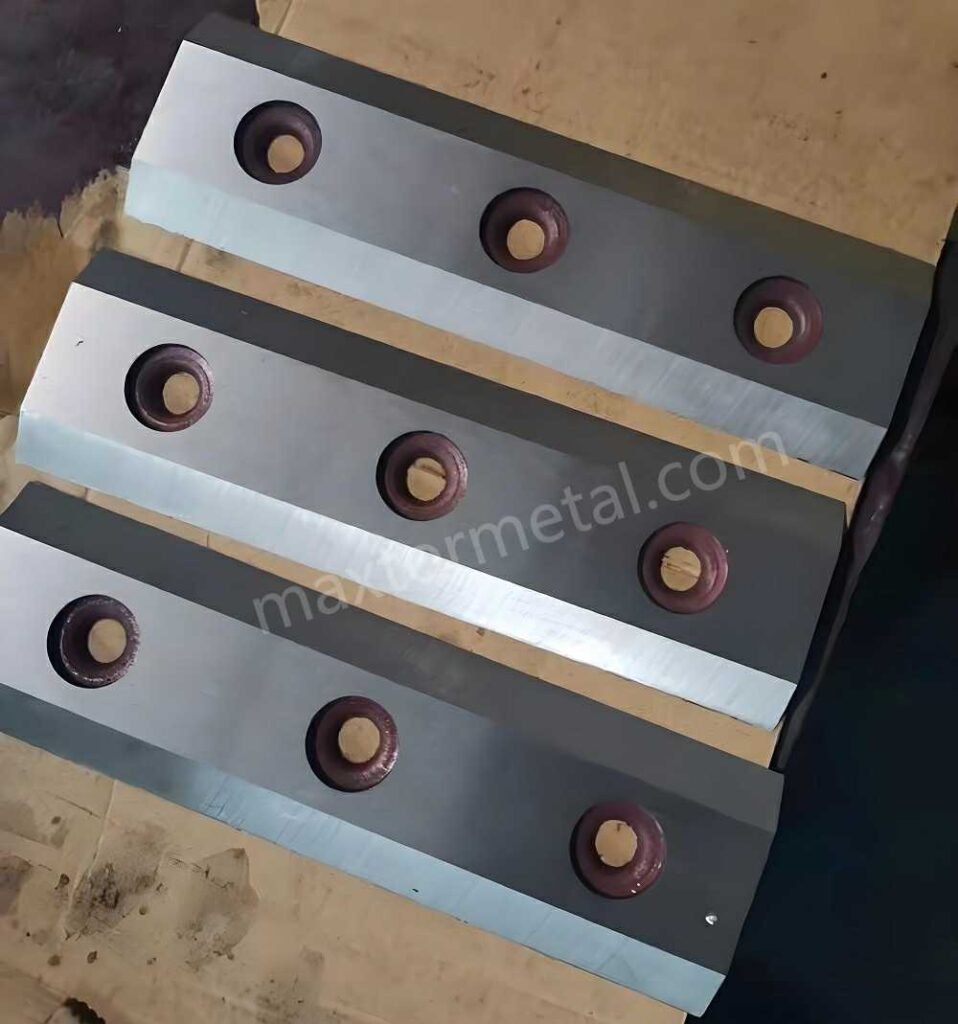
6.5 Apa Tanda-tanda Pemasangan Pisau yang Tidak Tepat?
Menjawab: Jika bilah tidak dipasang dengan benar, Anda mungkin memperhatikan:
❌ Getaran atau kebisingan yang berlebihan – Menunjukkan ketidaksejajaran atau baut yang longgar.
❌ Ukuran material yang dicacah tidak rata – Menunjukkan jarak bilah yang tidak tepat.
❌ Mata pisau terlalu panas – Bisa disebabkan oleh gesekan yang berlebihan atau ujung pisau yang tumpul.
❌ Sering macet – Disebabkan oleh orientasi bilah yang salah.
💡 Kiat Pro: Jika masalah ini terjadi setelah penggantian bilah, segera periksa kembali nilai penyelarasan dan torsi.
6.6 Tindakan pencegahan keselamatan apa yang harus diikuti selama penggantian bilah?
Menjawab: Untuk mencegah cedera dan kerusakan mesin, ikuti langkah-langkah keselamatan berikut:
✅ Selalu matikan dan kunci/tagout (LOTO) mesin sebelum perawatan.
✅ Kenakan sarung tangan antipotong dan kacamata pengaman untuk melindungi dari ujung yang tajam.
✅ Gunakan alat pengangkat yang tepat jika bilahnya berat untuk mencegah cedera tegang.
✅ Periksa kembali keselarasan bilah sebelum mengencangkan baut untuk menghindari kegagalan operasional.
✅ Pastikan mesin telah diuji sepenuhnya sebelum melanjutkan operasi penuh.
💡 Data Industri: Menurut laporan keselamatan di tempat kerja, 70% dari cedera yang berhubungan dengan mesin terjadi karena prosedur pemeliharaan yang tidak tepat (Sumber: Jurnal Keselamatan dan Teknik, 2023).
Mengganti Pisau Penghancur Plastik dengan benar memastikan penghancuran yang efisien, mengurangi waktu henti, dan memperpanjang umur mesin. Mengikuti panduan ini akan membantu mempertahankan kinerja optimal sekaligus meminimalkan biaya operasional.
🔹 Butuh pisau industri berkualitas tinggi? Penawaran Nanjing Metal solusi bilah khusus dirancang untuk daya tahan dan kinerja maksimum.
📩 Hubungi kami hari ini untuk konsultasi gratis!



satu Respon